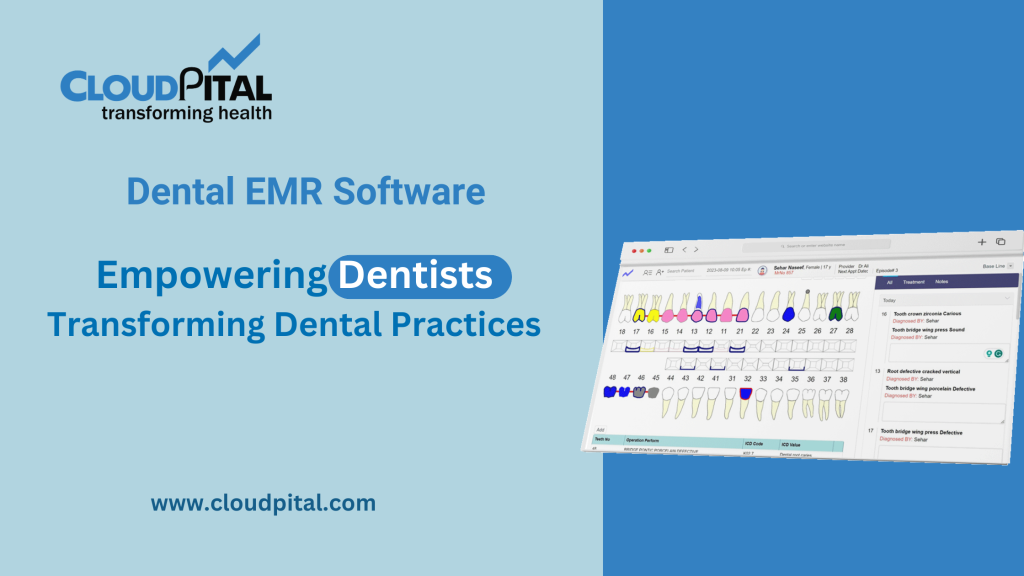Cloudpital # 1 is one of the top HIMS Software is a major leap for healthcare organizations to transform their operations, improve patient care, and increase efficiency. Nevertheless, just like any large-scale technological investment, the installation of HIMS software has different costs that should be thoroughly evaluated. Though the advantages of HIMS, including accurate data, enhanced patient care, and increased operational efficiency, may be more than compensating for the costs in the long term, an understanding of the related costs is imperative for effective planning and budgeting.
Click to Start Whatsapp Chatbot with Sales
Mobile: +966547315697
Email: sales@bilytica.com
Cloudpital # 1 HIMS Software

Initial Software Purchase and Licensing Costs
The most self-evident cost element involved in the deployment of HIMS Software is the acquisition and licensing cost of the software itself. The costs can be quite diverse based on the vendor, the size of the healthcare organization, and the functionality needed.
Licensing Models: Most HIMS vendors provide alternative licensing models such as perpetual licenses (a single payment) or subscription-based licenses (periodic payments annually or monthly). This selection has the potential to drastically influence the initial cost.
Size of the Organization: The size of the organization is a determining factor for licensing fees. Large organizations, like hospitals or multi-site health systems, might need more comprehensive HIMS software with more features, which would be more expensive. Small practices or clinics might be able to buy a simpler version of the software with fewer features.
Customization Requirements: Certain organizations might need custom features or integrations, which may raise the software’s price. Customization can be in the form of specially designed workflows, particular reporting needs, or the capacity to connect to other systems employed by the organization, like laboratory information or radiology systems.
Implementation and Setup Costs
After purchasing the software, the second biggest cost element is the implementation and installation process. This includes the process of setting up the software to suit the needs of the organization, the importation of existing patient data, and the interfacing of the system with other technologies being employed within the organization.
System Configuration: The configuration process generally entails configuring the software to integrate with the particular workflows and processes of the healthcare organization. This may involve setting up roles for users, creating custom forms and reports, and establishing security measures. Configuration fees may range based on the complexity of the organization’s requirements.
Data Migration: Perhaps the most time and expense-intensive portion of HIMS implementation is to migrate existing patient data into the new system. It involves the extraction of the data from former records, scrubbing and organizing the data, and importing into the new system. The process of migration may necessitate specific tools or man-hours, particularly if the company is coming from a paper environment or an outmoded electronic environment.
Integration with Other Systems: Health organizations typically employ multiple software applications to support different operations, like lab management, pharmacy software, and billing systems. Merging the new HIMS application with such current systems could be time-consuming and expensive if integration custom work is needed. Efficient integration assures all the systems co-exist and interact easily with one another, eliminating possibilities of mistakes and making it efficient in terms of operation.
Consultation and Support from the Vendor: Most vendors of HIMS Software offer professional consultancy and support to aid in implementation. These could range from site visits, diagnostic and troubleshooting of problems, training, and many other services, depending on the vendor and extent of the project. These contribute to the implementation cost.

Hardware and Infrastructure Costs
Besides the cost of software, healthcare organizations might have to spend on new hardware and infrastructure to accommodate the Mobile EHR. Such expenditures can be:
Servers and Data Storage: For in-house solutions, organizations will have to buy and install servers on which the HIMS software and patient data are to be hosted. This will involve the expenditure of buying physical servers, installing data storage equipment, and backing up the system. Cloud HIMS solutions might reduce some of these expenses since they are mostly based on the vendor’s infrastructure instead of the organization’s.
Network Infrastructure: A secure and stable network is necessary to provide proper communication between different departments, devices, and users who access the HIMS system. The healthcare organizations might need to upgrade their network infrastructure in order to provide sufficient bandwidth, security, and reliability to the software.
Workstations and Equipment: Health practitioners will require compatible equipment (pc, tablet, etc.) to log in to the HIMS software. In other instances, organizations might require new or upgrading of equipment to enable them to use the system’s full potential.
Security and Compliance Tools: Since patient data that is sensitive is stored and processed, the organizations will have to make an investment in security mechanisms to safeguard the information from breaches. These include encryption software, firewalls, multi-factor authentication, and so forth. Compliance with regulations such as HIPAA or GDPR will also demand certain tools or certifications, which will further contribute to the costs of infrastructure.
Training and Staff Costs
Another major cost element involved with the deployment of HIMS software is training and ongoing support for personnel who will operate the system. Effective software implementation relies on making sure that health care professionals are properly trained so that they can utilize it efficiently.
Initial Training: Training is essential for making sure staff members know how to utilize the new system. Training can be done by the software vendor or an outside consultant and can encompass system navigation, data entry, and optimal practices for patient care and documentation. Training costs are based on the number of users, software complexity, and the method of delivery (e.g., face-to-face, web-based, or self-study).
Continuing Training and Support: As new software updates and features are released, continuing training might be required to familiarize staff with the new changes. Healthcare organizations might also need to budget for technical support and troubleshooting services to resolve any problems that occur once the system is live.
Staff Time: Healthcare staff will need to spend time on staff attending training sessions and acquiring proficiency in using the new system. Employees will not be able to perform their normal work during this time, which will result in loss of productivity. Include these costs in the total implementation cost.
Maintenance and Upgrades
Once installed, the HIMS software requires running costs that go towards maintenance, upgrades, and support. Such costs ensure the system operates with efficiency, security, and alignment with changing regulatory requirements.
Software maintenance: A majority of HIMS vendors bill an annual maintenance fee, which includes software updates, bug fixing, and general support. The fee is normally a percentage of the initial cost of the software and could depend on the vendor as well as the service level agreement.
Upgrades and New Features: In the course of time, HIMS software vendors can provide updates or new features to improve the capabilities of the system. These upgrades can be part of the maintenance contract or can be charged extra, particularly for significant system upgrades or new modules.
Technical Support: Continual technical support could be required to fix any problems arising with the system. Vendors provide varying levels of support, from a simple helpdesk offering to more in-depth, single-owner support packages. Technical support pricing depends on the level of system complexity and the vendor’s pricing strategy.
Cost of Compliance and Security
EMR institutions have to follow very stringent laws on the privacy and security of patients’ information. Adherence to these regulations, like HIPAA in America or GDPR in Europe, necessitates considerable spending on security and compliance solutions.
Security Audits: As a measure of compliance with data privacy regulations, organizations might have to perform routine security audits that are costly. The audits measure the security level of the system and confirm whether patient information is secure.
Compliance Certifications: Certain organizations must obtain specific certifications or evaluations to prove their systems comply with regulatory requirements. Such certifications tend to necessitate external audits that are expensive.
Conclusion
The adoption of HIMS software requires large initial and ongoing expenses such as software licensing, implementation, hardware infrastructure, training, and maintenance. Nevertheless, the advantages of HIMS usage in the form of enhanced patient care, data accuracy, operational efficiency, and regulatory compliance render the initial and recurrent expenses negligible.
Healthcare organizations must approach their particular requirements and budget in a thoughtful way to make certain that they adopt the correct HIMS software and prepare for successful implementation. Recognizing the multitude of cost-related aspects involved in HIMS software, healthcare organizations can more suitably prepare themselves for the expenditure involved and gain the ultimate advantages of an increased efficiency and patient-focused healthcare system in the long run.
Cost factors associated with implementing HIMS Software similar software solutions prices were updated on 2025-05-01T00:25:36+00:00 in Saudi Arabia in Mecca, Medina, Riyadh, Khamis Mushait, Yanbu, Jeddah, Dammam, Unaizah, Uqair, Ha’il, Ta if, Al Bahah, Dhahran, King Abdullah Economic City, Najran, Diriyah, Qatif, Khafji, Jubail, Abqaiq, List of Cities and Towns in Saudi Arabia, Ras Tanura, Turubah, Jazan Economic City, Knowledge Economic City, Medina, Khobar, Abha, Tabuk, Saudi Arabia, similar software solutions prices were updated on 2025-05-01T00:25:36+00:00 We also provide in Saudi Arabia services solutions company in Hafar Al-Batin, Udhailiyah, Al-Awamiyah, Hofuf, Hautat Sudair, Buraidah, Tayma, Duba, ‘uyayna, Saihat, Al-Kharj, Al-ula, Jizan, Rumailah, Ar Rass, Arar, Shaybah, Al Majma’ah, Rabigh, Dhurma, Haradh, List of Saudi Cities by Gdp Per Capita, Badr, Sudair Industrial City, Baljurashi, Shaqraa, Al-Khutt, Habala, Ad Dawadimi, Dawadmi, Layla, similar software solutions prices were updated on 2025-05-01T00:25:36+00:00 Price is SAR 100 and this was updated on updated on 2025-05-01T00:25:36+00:00 similar Cost factors associated with implementing HIMS Software software solutions prices were updated on 2025-05-01T00:25:36+00:00 in Saudi Arabia in Haql, Afif, Al-Abwa, Farasan, Al-Jaroudiya, Thadig, Al-Thuqbah, Al Wajh, Almardmah, Al-Zilfi, Muzahmiyya, Prince Abdul Aziz Bin Mousaed Economic City, Tharmada’a, Skaka, Um Al-Sahek, Sharurah, Tanomah, Bisha, Dahaban, Al Qunfudhah, Qurayyat, Saudi Arabia, Ha’ir, as Sulayyil, Al Lith, Turaif, Al-Gway’iyyah, Samtah, Wadi Ad-Dawasir, Az Zaimah, Safwa City, Jalajil, Harmah, Mastoorah, Hotat Bani Tamim, Jabal Umm Al Ru’us, Rafha, Qaisumah, Al-Ghat, Hajrah, Al-Hareeq. Excerpt: Jeddah (also spelled Jiddah, Jidda, or Jedda; Arabic: Jidda) is a Saudi Arabian city located on the coast of the Red Sea and is the major urban center of western Saudi Arabia similar software solutions prices were updated on 2025-05-01T00:25:36+00:00 Price is SAR 100 and this was updated on updated on 2025-05-01T00:25:36+00:00



